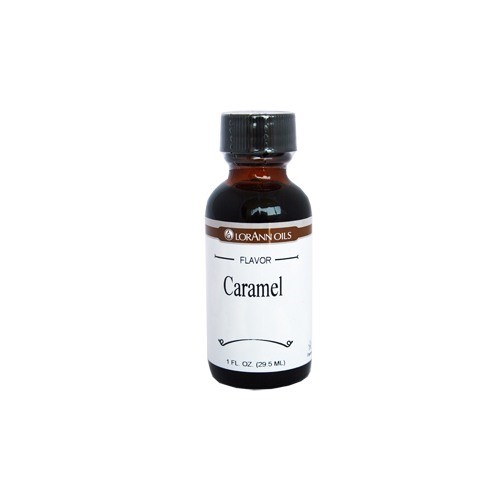Differences Between Extracts, Emulsions, Natural Oils, Candy Oils, and What’s the NEW Vanilla?
CARAMEL is the new vanilla. It's hard to think of anything that isn't better with caramel. I'm starting to use more caramel flavoring than vanilla because of this very reason.

And lo and behold, I read the same sentiment in the latest Prepared Pantry newsletter that I got a week ago. Owner and chef extraordinaire, Dennis Weaver, was talking about how they love caramel and in their test kitchen they're using it more than vanilla also. Their reason is my reason: It makes cookies and cakes so much richer and well, caramelly.
Dennis was saying how they hardly ever make vanilla whipped cream anymore (same here). At Prepared Pantry they add caramel flavor to banana bread, their granola recipe, and their favorite chocolate chip cookies. Again, same here. It's amazing in tapioca pudding and its warm flavor compliments fruit really well. And it knocked our socks off when we substituted caramel for maple when glazing our raised donuts and bars-it's now caramel bars instead of maple bars.

Caramel flavoring is at the heart of any toffee-flavored recipe. So you can imagine the splendor it creates when used with monkey bread, sweet rolls, or bread puddings. The Sticky Toffee Pudding pictured is covered with caramel sauce and lightly flavored caramel whipped cream. Caramel sauce is no real surprise, but when it's paired with caramel-flavored whipped cream, folks take notice.
I've been experimenting with my morning oatmeal using caramel flavoring as well. A little goes a long way, but wow, mashed bananas and a smidge of caramel flavoring created one of the best oatmeal breakfasts I've ever had.
Now let's look at the wide world of flavorings. There are a few choices in how flavors are offered (extracts, emulsions, natural flavorings, and flavoring oils), and it can be confusing.
So what is the difference between extracts, emulsions, natural flavorings and flavoring oils and when do you use each one? All of these have more than one application. Each has their own characteristics and I found excellent help with this question on one of my favorite baking sites, Baker's Nook (www.shopbakersnook.com). Let's start with extracts.

EXTRACTS are generally the most common type of flavorings. They are alcohol based and are most commonly found in pure or imitation. Pure extracts are generally stronger than imitation extracts. So why would you want to use an imitation? The main reason is the imitation extracts are usually clear in color so they won't change the color of your batters and frostings. You can use extracts to flavor cookies, icings, cake batter and candy fillings. Extracts are just fine for all baking needs.

Next, EMULSIONS. The main difference between emulsions and extracts? Emulsions are water based and not alcohol based. Emulsions are superior to extracts because when they are subjected to high heat the flavor will not bake out. So you will end up with a better flavor in anything you bake by using emulsions. If a recipe calls for 1 teaspoon of extract, you can substitute 1 teaspoon of emulsion. Just like extracts, you can use emulsions to flavor anything you're baking as well as in icings and fondant.

Then there's NATURAL FLAVORINGS. They contain no added sugars or fats and are water soluble. You can use them to flavor icing, cakes, cookies, ice cream, candy centers, and even hard candy. Natural flavoring will also work for all your baking needs. One thing to remember, though, when making hard candy using natural flavorings: You will need to add double the amount of natural flavoring as you would of a candy oil.

And how about CANDY OILS? Most people think they are only used to flavor hard candy. Not true. First of all candy oils are not oil based. They contain no vegetable oil. Candy oil actually means the flavor is concentrated and undiluted-being 3-4 times stronger than extracts. If a recipe calls for 1 teaspoon of extract you'd only need 1/4 to 1/2 teaspoon of candy oil.
And this is the only flavoring that is safe to use in flavoring chocolate. Water based flavorings will seize up chocolate and make it unusable. So to flavor chocolate, use approximately 1/4 to 1/2 teaspoon of candy oil per pound of chocolate. And like the other flavorings, candy oils can be used for all your baking needs.

So back to CARAMEL. My flavoring of choice is as a candy oil. It's easy to use and maintains a rich, true taste when baked. But however it comes, it's wonderful and deserves priority placement in your cupboard-it's the new vanilla, and rightly so!
- www.preparedpantry.com
- www.pinterest.com
- www.prweb.com
- www.barryfarm.com
- www.shaunasever.com
- www.lorannoils.com
 Alice Osborne
Alice Osborne
Weekly Newsletter Contributor since 2006
Email the author! alice@dvo.com
